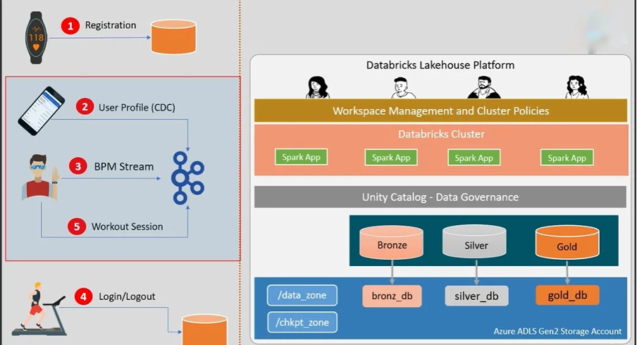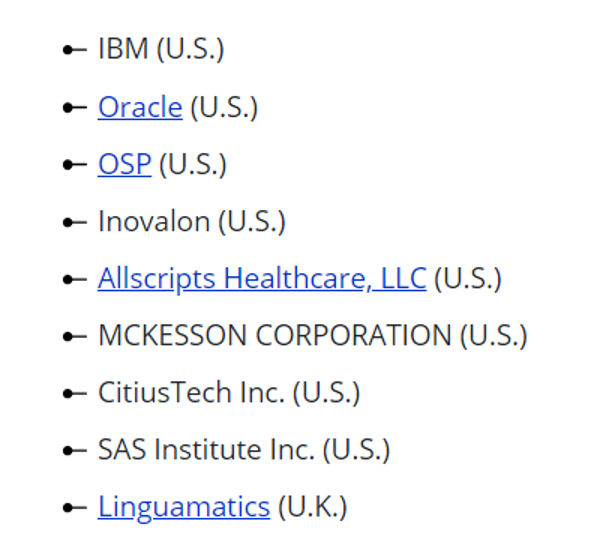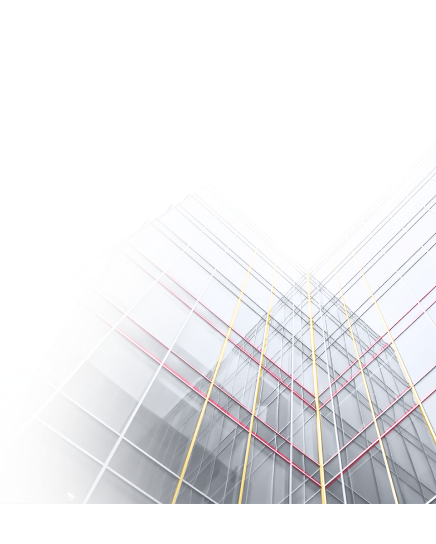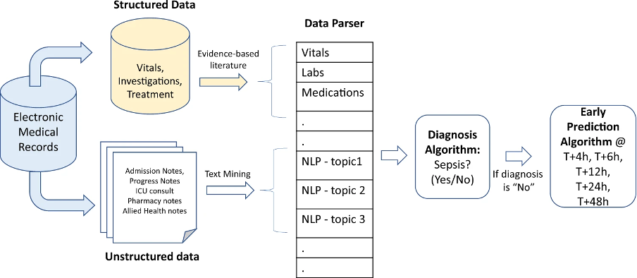When we speak about predictive healthcare, we mean the use of data, algorithms, and techniques to identify the probable likelihood of future health outcomes based on historical or real-time data. Custom healthcare software development plays a crucial role in enabling these predictive capabilities by providing tailored solutions for data collection, analysis, and decision-making.
How could real-time analytics be useful for predictive healthcare? To illustrate it, let us give you a real-time example. Emergency Room gets notified about the possible stream of patients coming their way. Re-allocation of staff could be useful when the hospital can predict.
What if COVID-19 was identified as a growing disease during its first registered cases in Wuhan, or even before that?
How about real-time data analytics for detecting adverse safety events in clinical trials of new drugs sooner?
In this article, we’re going to explore real-life cases when real-time analytics makes a whole world of difference for patients, doctors, hospitals, and even states. Also, we have to explore the challenges predictive healthcare has to face.
Examples of Real-Time Analytics Applications in Healthcare
Early Sepsis Detection
Most people who die in US hospitals, do it because of sepsis. Every year, the number is around 270,000 people.
Naturally, the earlier sepsis is detected, the better the life-saving chances. In other words, sepsis mortality increases significantly with each hour of delay in antimicrobial administration Nothing proved as effective as the combination of AI and real-time analytics in tackling the problem of the early detection of sepsis.
Firstly, most known and used methods for sepsis diagnosis and early prediction use structured data stored in the electronic medical records (EMR) system. At the same time, 80% of the data in EMR is unstructured (stored not in a standardized format). It should be considered a data source to develop better AI tools, especially for medical conditions such as sepsis, where early symptoms aren’t easy to recognize.
The scientists have developed a Sepsis Early Risk Assessment (SERA) algorithm. The whole principle description is available on the source link and is too complicated to be described here, but the flow diagram should give you a rough idea of how it should work.
Sepsis early risk assessment (SERA) algorithm
SERA algorithm
Source: nature.com
After a series of calculations the researchers did, they concluded that the SERA algorithm can increase the number of early sepsis detections by 21–32% compared to relying just on taking into account hospital physicians’ assessments. That is real-time analytics in action.
Managing Disease Spread
Real-time analytics are especially useful for identifying trends in how a certain disease might spread, allowing healthcare infrastructure representatives to act accordingly.
The most obvious example of real-time analytics used for identifying the growing disease is COVID-19. Health organizations across the world followed a set of instructions and utilized different techniques to study the ways the virus was spreading in real-time.
Some of these techniques utilized AI to its fullest. One of the examples is InferRead software: the tool that collected the CT scanner data to analyze the effect COVID-19 had on the lungs. That saved lots of time for diagnoses.
Hospital capacity, testing capabilities, and equipment availability could be assessed ahead of time with the help of real-time analytics software for aggregating and tracking data. A good example of this was the COVID-19 Real-time Crisis Management Platform developed by Kitetika and Disaster Tech.
What was once relevant with COVID-19, can be replicated for other diseases and similar platforms could help humanity to prepare for future crises.
If you’re interested in developing a real-time data analyzing platform, we happen to have some professionals in the field who could help you with this task. Contact us for a free consultation.
Utilizing Insights From Commercial Fitness Trackers
It doesn’t have to be a massive hospital network and grand streams of data for insights on real-time analytics to be actionable. Even data from your Apple Watch or Fitbit bracelet could become a food for thought at least.
This is what an Azure-based solution for real-time collection, processing, and analysis of fitness data generated by Fitbit looks like:

Azure-based solution by Fitbit
Source: medium.com
Fitness trackers wouldn’t replace a doctor’s appointment, but they could alert the user to some health risks they’re prone to experience soon. Some metrics, like a heart rate abnormally high might serve as an incentive to visit your private doctor.
There are documented cases when Apple Watch helped to prevent heart-related collapses.
“It saved my life. If I hadn’t had the alert I wouldn’t have brought it up with the doctor. Now I wear the Apple Watch all the time,” – stated Elaine Thompson in her interview with Manchester Evening News.
Even the starter pack of real-time analytics could serve predictive healthcare good and could be lifesaving.
Challenges Predictive Healthcare Faces
While we can’t deny that real-time data brings some value to the healthcare world, there is quite a set of challenges predictive healthcare faces nowadays. Some of them are related to data quality and quantity, and others have different natures. It would only be fair to touch all of them in this blog post.
Algorithm bias and unregulated environment
Predictive analytics is based on algorithms, and these algorithms can be biased. Skewed data could come through, vendors could do not a very good job making sure that the algorithms are still relevant, and that could lead to a whole world of problems.
What’s worse, there are no regulations governing algorithm development, and even if there were, it’s too complicated of a matter. So even if regulations appear, could they be effective? That would remain an issue for a long time.
Model explainability
As one could guess, healthcare predictive analytics models aren’t simple. The underlying algorithm is usually comprehensive and complex, as it includes difficult math computations. Even experienced physicians struggle to translate the data in a way that would lead to a viable model prediction.
The underlying algorithm is highly sophisticated with complex mathematical computations. Therefore, it is difficult for even seasoned practitioners to comprehend the model working mathematically and translate it into reasoning to support model predictions.
As model complexity increases, so does its accuracy. Consequently, black-box models typically provide more accurate predictions, but this comes at the expense of interpretability.
Gaining acceptance of professionals in hospitals
With the advent of predictive analytics, doctors must not only access dashboards but also continually capture and process patient data. That could alienate many professionals in the field, and persuading them comes as a challenge
To address this issue, medical facilities can engage their staff in the development of predictive analytics tools, and there are not too many ways to do that at the moment.
Data-related issues
Data quality and availability, the privacy and security of the patients, problems with data integrations from various sources – this is not the full list of challenges predictive healthcare faces.
Add to that, that we’re speaking of real-time analytics, which doesn’t make the situation easier.
Dealing with so many issues and challenges is a good explanation that reliable, and ethical predictive analytics solutions are hard to build in the modern healthcare environment.
Leaders of the Predictive Healthcare Market
The market for healthcare predictive analytics is projected to grow from $16.75 billion in 2024 to $184.58 billion by 2032, at a CAGR of 35.0%.
As you understood from earlier, there are endless opportunities for its applications. Mount Sinai Health System created predictive models for identifying COVID-19 patients with a high risk of mortality probability. Asthmapolis utilizes inhales with GPS-enabled trackers for asthma to find asthma trends in the population.
But the leaders of predictive analytics markets are huge enterprises, like IBM, or Oracle. IBM even connected with Amazon to provide SaaS services in cooperation.
The leaders of the industry according to Fortune Business Insights:

Leaders of the Predictive Healthcare Market
Source: fortunebusinessinsights.com
However, it’s likely none of the existing products will satisfy your needs fully. if you’re looking for a custom product, it’s better to address a software development company. Contact us to discuss the potential of our cooperation, and maybe together we’ll build a software piece that will become the new best thing in real-time analytics-run predictive healthcare.
Conclusions
Real-time analytics has an immense impact on predictive healthcare. It’s reached by integrating data into modern solutions. That in turn, has a positive impact on health outcomes.
Medical facility managers are exploring ways to integrate predictive analytics into their organizations. Ensuring that both doctors and executives are aligned and supportive of these technologies is key to successful implementation for every hospital.
However, the path to fully realizing the benefits of predictive healthcare is fraught with challenges. Algorithms are complex, especially for real-time data, and their processing is barely regulated.
Physicians and hospital administrators still need to be persuaded that the result of using real-time analytics is worth the trouble. But despite those challenges, the future of predictive healthcare is promising, and those who embrace these advancements will be at the forefront of a transformative era in medicine.
Enhancing Healthcare with Innovative Software Solutions
Web Design for a Healthcare Company
Automation QA for Healthcare Data Privacy
Healthcare Data Anonymization Platform
Patient Portal for a Healthcare Company
Optimizing and Speeding Up Software Development for Pharmaceutical Companies
Code Optimization for a Biopharmaceutical Company in Germany










